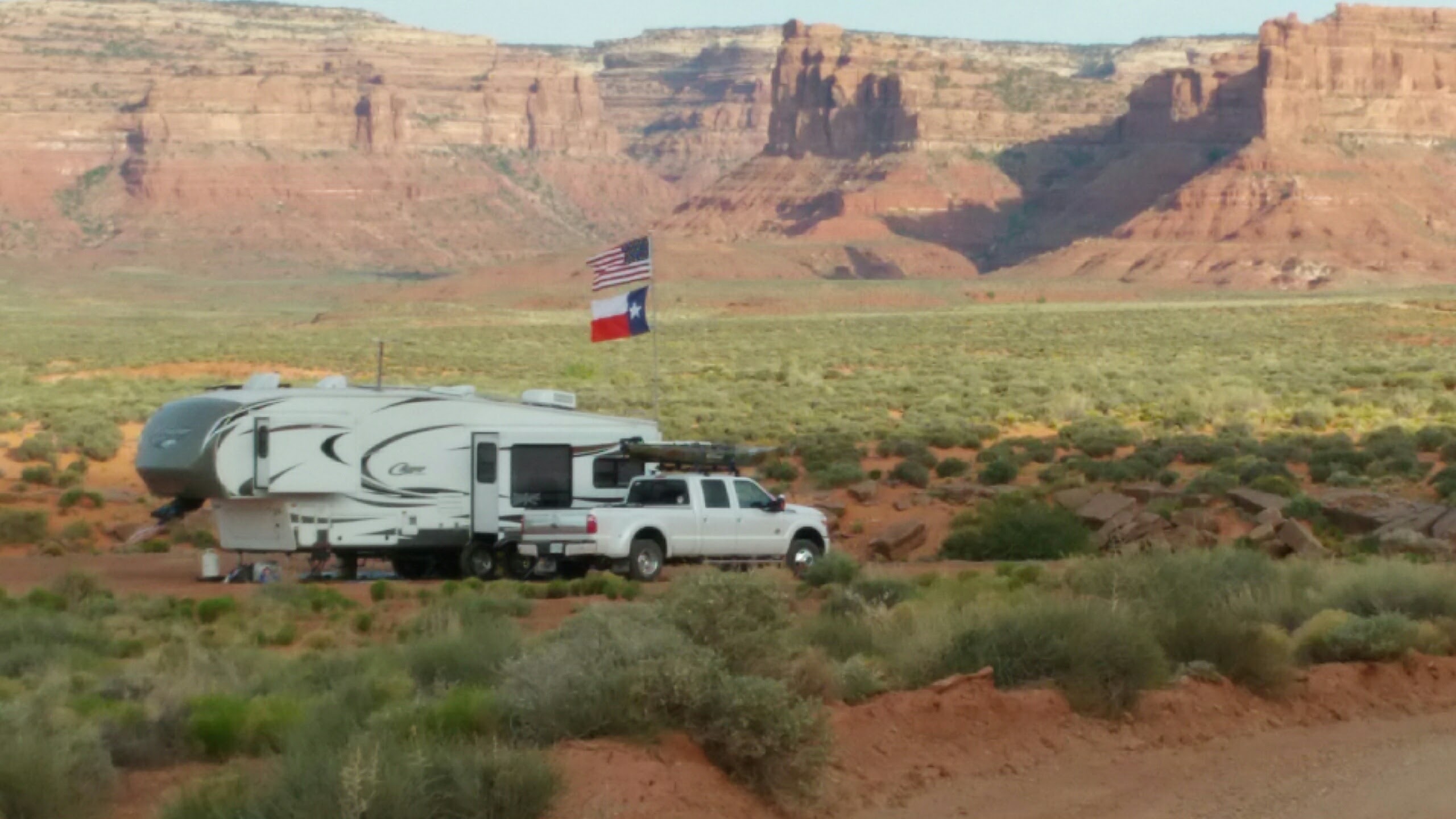Recently we were in Livingston Texas.
Had some To-Dos to take care of and one was to get the rig weighed AGAIN.
Since our last weigh in last year, I’ve added some items that have definitely added to the Cougars’ weight.
- A solar system including Panels, Batteries, Inverter plus the
extra hardware and wiring that makes it all work. - A Strong-arm stability system on the landing gear and jacks.
- A under-chassis storage/spare tire carrier.
- Carrying my Bulldog Folding Kayak trailer body on the rear rack.
- Air compressor.
Now, I’ve gotten rid of a lot of stuff as well, so I am just curious where it comes in on the scale because I want to see if there is room in GVWR (Gross Vehicle Weight Rating) for 2 more batteries and one more solar panel.
Here is our results:

I had to look up the GCWR (Gross Cargo Weight Rating) on the truck and made the correction on the form.
Now when we were done with the weighing, I got to have a briefing with Kris who performed the service, she also measured our max height.
She was very concerned as it appears I am over the rated Gross for the trailer already!
I think Keystone has to be a little more clear and detailed on the tag attached to the units.
You see, mine says I have a maximum of (GVWR) 11,980. Well my total weight came in at 12,650.
I got to looking and discovered the pin weight wasn’t added in to the manufactures tag.
So if I take the 11,960 and add in the rated pin weight of 1580 (had to look that up too), it should be 13560!
That’s better. So that leaves me with 910 pounds before I am over loaded.
13560-12650=910.
Compared to my last weigh-in of 12,090, we added 560 pounds in hardware.
OK, that’s all good. But are the axles overloaded? One tire over its rated max?
These are all details that come to light in a weighing of this type.
My axles are supposed to be capable of AVERAGE (GAWR) of 5200 pounds.
Looking back at my stats, the rear axle is overloaded by 300 pounds (5500 – 5200).
The front axle only has 25 pounds to spare.
Knowing this, I have to relocate the kayak trailer from the rear of the trailer. I may sell it or donate it.
Or just put it back in the bed of my truck since there is lots of extra capacity there.
Just have to reorganize.
When I do this, I should see a little heavier pin weight. Right now its 1975 pounds, which is 15.6% of the total weight. That’s is within the industry standard of 15-25%.
Also something to note: The rear right tire is carrying 200# more that its partner on the left or the one on the front axle. Can’t figure why but Kris said sometimes manufactures make weird shaped tanks just to get them to fit. I don’t know.
When Eddie (of Mobile Homestead Solar Services) installed the under-carriage storage unit, he pulled the underbelly cover loose and we both looked at the water tank from the bottom.
Don’t remember it being an odd shape but I wouldn’t put it past the engineers in Elkhart.
Looking at the last weight sheet, the wheels were almost even. One possibility is it is a typo. It may actually be 2650 and not 2850. This makes more sense because like I said the last weighing the wheels were nearly identical. I have a re-weight available to me and I thing I will take advantage of that.
So there you are! If you are able, get your rig weighed and preferably at a place where they can do all the wheels individually.
If you found this valuable, please leave me a comment and share as you please.


